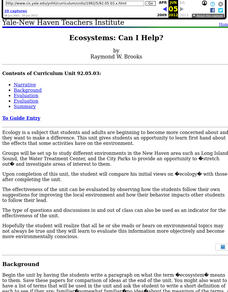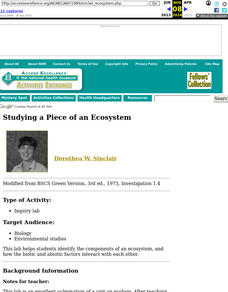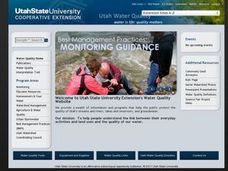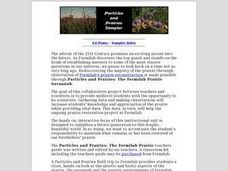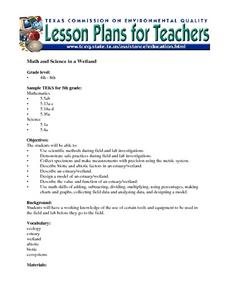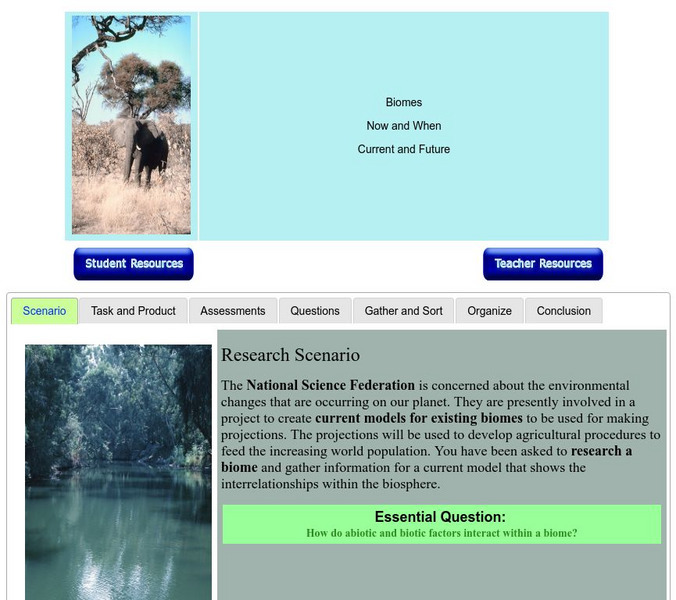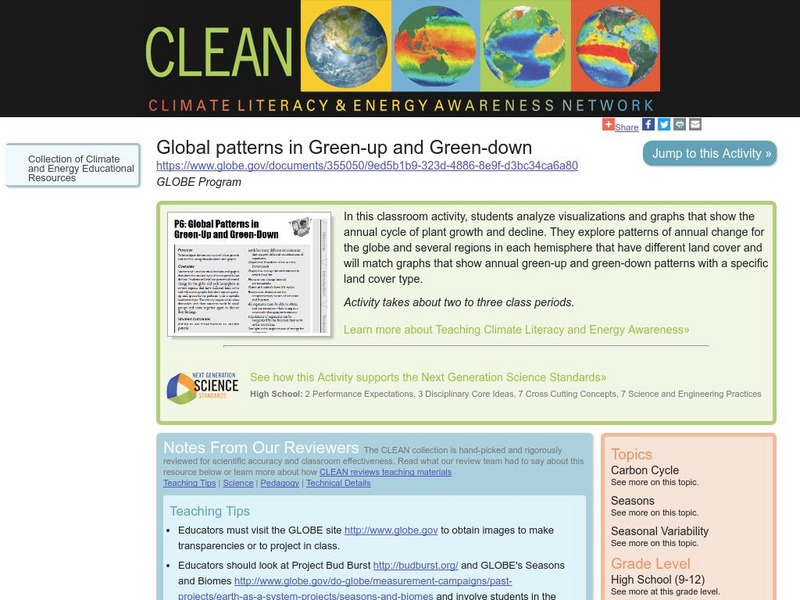Curated OER
Fascinating Factors
Students observe biotic and abiotic things participating in an observational walk outside the school. They create a collage using pictures of biotic and abiotic items.
Curated OER
Ecosystems: Can I Help?
Pupils study how some activities effect the environment and ecosystems.
Curated OER
Studying a Piece of an Ecosystem
Students carry out an outdoor land study in which they identify organisms living in the soil, and any other animals living within the site. Groups also examine abiotic factors. They respond to a series of questions concerning their data...
Curated OER
Examine an Ecosystem
Students examine an ecosystem and record what they see. In this ecosystem lesson plan students use a worksheet to help them identify the organisms in their ecosystem.
Curated OER
Principles of Ecology
In this ecology worksheet, students will fill in a graphic organizer showing the relationship organisms have with their environments and with each other. This includes biotic and abiotic factors, tropic levels, and ecological pyramids....
Curated OER
Biology Vocabulary
In this biology worksheet, students identify and locate various vocabulary terms pertaining to food webs and animal species. There are 52 biology terms located in the word search.
Curated OER
SIM Ecosystem
Students identify and interpret the concept of an ecosystem and the potential impact humans have on ecosystems. They also proficient in organized and methodical Internet searches. Finally, students become proficient with public...
Curated OER
Habitat Unit - Day 2
Students explore abiotic factors that affect habitats. After a class lecture, students work in groups to answer questions about plant tissue, production and growth. They share answers, complete a crossword puzzle, and create a habitat...
Curated OER
That Is Predictable
Students investigate the changes that can take place in an aquatic environment. They conduct research using a variety of resources. The research is used to report different possibilities of change because of abiotic or biotic factors.
Curated OER
The Macaroni Lab
Students are given an introduction to the "ecosystem", what factors make up an ecosystem (biotic factors, abiotic factors, food chain, producers, consumers and decomposers) and how those factors interact.
Curated OER
Particles and Prairies Sampler
Students explore the prairie and Fermilab's reconstruction project. They observe the abiotic and biotic aspects of the prairie, the savannah and the aquatic environments of Fermilab. Students perform lab and field studies.
Curated OER
Soaping Up in the Great Lakes
Students investigate the effects of a variety of cleaning agents on the biotic and abiotic properties in the Great Lakes. They work with student from other schools to determine a workable solution that reduces the impact of cleaning...
Curated OER
Math and Science in a Wetland
Students describe safe practice when doing field and lab investigations in a estuary or wetland. They create a model of an estuary and describe their value and function. They participate in field study in which they collect and analyze...
Curated OER
Urban Safari: A Walk on the Wild Side
Students discover the urban ecosystem through a series of activities. They explore both the biotic and abiotic factors of the urban environment.
Other
Baltimore County Public Schools: Biomes: Now and When (Online Research Model)
Biomes lesson designed to answer the question, how do abiotic and biotic factors interact within a biome? integrates biological concepts with literacy knowledge and skills. Includes directed questions, assessment guides, project...
National Geographic
National Geographic: Marine Ecosystems and Biodiversity
In this unit students explore major marine ecosystems by locating them on maps. Students use marine examples to learn about energy transfer through food chains and food webs and then they discuss how food webs can illustrate the health...
CK-12 Foundation
Ck 12: Episd: Ecosystems
[Free Registration/Login may be required to access all resource tools.] Explore ecosystems and ecology on an introductory level uncovering fact about types of ecosystems and the competitive exclusion principle.
CK-12 Foundation
Ck 12: Episd: What Are Biomes?
[Free Registration/Login may be required to access all resource tools.] Students will consider the influences that create different biomes. Recognize and classify the types of biomes.
CPALMS
Florida State University Cpalms: Florida Students: Diving the Depths of Underwater Life
A tutorial that explores how and why the distribution of aquatic life is affected by abiotic factors, such as light, temperature, and salinity.
Texas Instruments
Texas Instruments: Ecology Vocabulary
This StudyCards stack enables students to review the vocabulary used in studying ecology.
Oswego City School District
Regents Prep: Ecosystems/communities
Abiotic factors vary in the environment and determining the types and numbers of organisms that exist in that environment. Factors which determine the types and numbers of organisms of a species in an ecosystem are called limiting...
Climate Literacy
Clean: Global Patterns in Green Up and Green Down
Students analyze and explore visualizations and graphs that show the annual cycle of plant growth and decline. They investigate several regions in each hemisphere that have different land cover and will match graphs that show annual...
Other
Abiotic Factors
Abiotic components are the nonliving components of the biosphere. Chemical and geological factors, such as rocks and minerals, and physical factors, such as temperature and weather, are referred to as abiotic components.
Sophia Learning
Sophia: Abiotic and Biotic Factors: Lesson 2
This lesson will introduce abiotic and biotic factors, giving examples and comparing/contrasting the two. It is 2 of 4 in the series titled "Abiotic and Biotic Factors."



